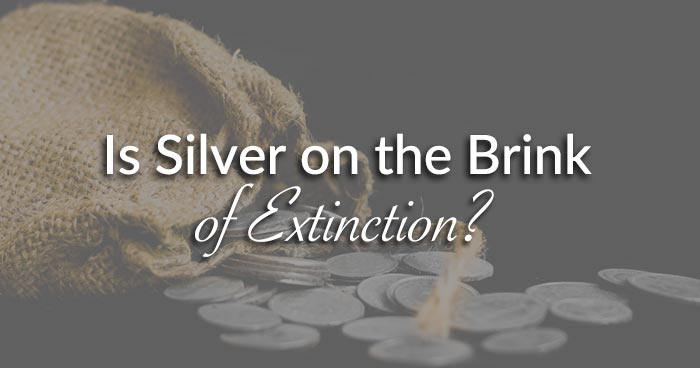Silver has been used as a form of money for thousands of years, dating back to ancient civilizations such as the Greeks, Romans, and Egyptians.
The word "silver" is derived from the Anglo-Saxon word "seolfor" and the Germanic word “silabar” which means "money."
The first known silver coins were minted around 600 BC in Lydia, an ancient kingdom in western Asia Minor (modern-day Turkey). These coins were made of a natural alloy of gold and silver called electrum.
Later, in the 5th century BC, the Greeks began producing silver coins, which became widely used in trade throughout the Mediterranean region.
In the centuries that followed, many other civilizations around the world used silver as a form of currency.
Silver and gold were referenced throughout the Bible.
The Chinese used silver coins during the Tang Dynasty (618-907 AD), and the Spanish introduced the silver peso in the 16th century, which became a widely used currency throughout the Americas.

In the Old Testament, the 'silver standard'
linked silver to barley (Leviticus 27:16).
Today, silver is still recognized as a form of money in many countries.
In Mexico, the silver peso is still legal tender. And the United States, Canada, Australia, and other countries continue to mint silver coins with official face values.
However, silver's use as a currency has declined broadly in favor of paper money and digital currencies. Silver coins are now held primarily for investment purposes.
Have there been times when silver has not been used as money?
Yes, there have been times throughout history when silver was not used as money.
For example, during the early part of the Middle Ages in Europe, gold was the preferred currency because it was more portable and easier to store than silver.
In addition, during specific periods of economic turmoil or instability, other commodities such as salt, cattle, or shells have been used as a currency.
But over time, the market always returned to gold and silver because of their unique qualities (i.e. divisibility, fungibility, rarity underpinning them as a store of value, and their practicality as media of exchange).
During the 20th century, many countries moved away from using silver as a currency due to the adoption of paper money and the creation of politicized central banking systems.
As a result, today, none of the world's currencies are backed by precious metals like silver or gold, but rather by the so-called "full faith and credit" in the government that issues them.
Despite this, silver is still widely used as an investment asset and in an increasing array of industrial applications, including electronics, solar panels, and medical equipment. Silver also retains monetary properties and can be used as money in barter and trade.
Could the world actually run out of silver?
It's difficult to predict whether we could actually run out of silver, as it depends on several factors such as the rate of global production, demand, and the development of new technologies for exploration and mining. If the market functions efficiently, the price mechanism will operate to help bring out more silver supply.
However, it's worth noting that silver is a finite resource, and its supply is depleting.
According to some estimates, the total amount of silver mined throughout history is around 1.6 million metric tons.
While this may seem like a lot, consider that much of this silver has been consumed in various industrial applications and is no longer recoverable.
In terms of current production levels, global silver mine production in 2022 grew to slightly more than 25,000 metric tons.
Demand for silver continues to grow, particularly in the electronics and solar industries.
Analyst Zan McPherson of XBullion had some great insights on this topic:
Sadly, that new world is rapidly encroaching on an already extremely constrained economic environment. At current rates, it's estimated that by 2028, the earth will have completely run out of economically mineable silver reserves.
Now that may seem seriously overwhelming, and in all honesty, it should, because at present, there are virtually no other known silver reserves. And at current prices, the vast majority of remaining silver reserves both above and below ground are economically unfeasible.
I say above and below ground because silver is one of only a few precious metals yet to be recycled from electronic waste. But, again, this is due primarily to the highly uneconomical extraction costs associated with recycling silver from most industrial/household goods.
Think mobile phones, PCs, tablets, television screens, microwaves, and any other white goods with an on/off switch. You should start to get a perspective of just how much perfectly usable silver is sitting in dumps across the globe.
But, of course, household tech goods only represent a small portion of silver's extensive industrial applications. With the rise in both EV (electric vehicle) demand alongside photovoltaic energy (solar panels), remaining silver reserves could be teetering precariously on the brink of extinction.
The reality is miners won't produce all the silver that is needed over time unless they are incentivized to “dig deeper.”
That won't happen until spot silver prices move significantly higher.
When you consider that silver has been money for over 2,500 years and valued for over 10,000 years, it is significant to know that at current prices there are only about 5 years of silver left.
As such, the potential for a wild move in silver prices in response to current and future needs reminds me of the quote “Gradually, then suddenly.”





